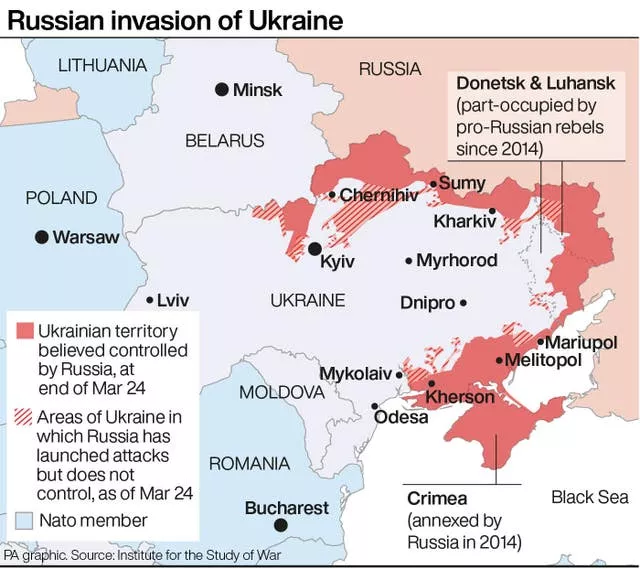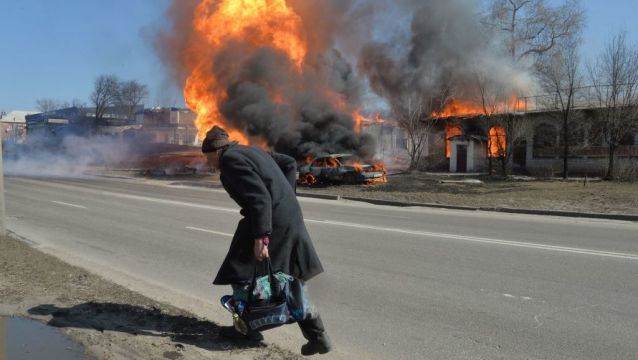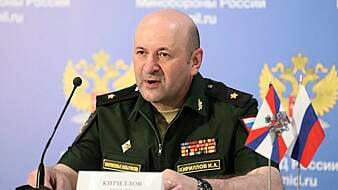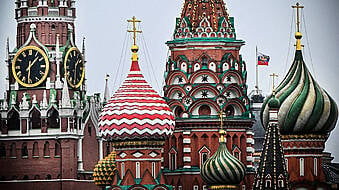About 300 people were killed in the Russian airstrike last week on a Mariupol theatre that was being used as a shelter, Ukrainian authorities said in what would make it the war’s deadliest known attack on civilians yet.
Meanwhile, in what could signal an important narrowing of Moscow’s war aims, the US said Russian forces appear to have halted, at least for now, their ground offensive aimed at capturing the capital, Kyiv.
Instead, they are concentrating more on gaining control of the Donbas region in the country’s south east — a shift the Kremlin seemed to confirm.
Col-Gen Sergei Rudskoi, deputy chief of the Russian general staff, said the main objective of the first stage of the operation — reducing Ukraine’s fighting capacity — has “generally been accomplished”, allowing Russian forces to focus on “the main goal, liberation of Donbas”.
The seeming shift in Moscow’s stated military objectives — after weeks in which Russian president Vladimir Putin denied Ukraine’s right to exist as a sovereign country and appeared bent on capturing many of its cities and toppling its government — could point to a possible exit strategy for Russia, which has run into fiercer resistance and suffered heavier losses than anticipated.
In fact, the Russians are no longer in full control of Kherson, the first major city to fall to Moscow’s forces, a senior US defence official said.
The official said the southern city is being contested by the Ukrainians in heavy fighting. The Kremlin denied it had lost full control.
The Donbas is the largely Russian-speaking eastern part of the country where Russian-backed separatists have been fighting Ukrainian forces since 2014 and where many residents desire close ties to Moscow.

Its coal-mining and industrial Donetsk and Luhansk regions are recognised by Russia as independent.
In Mariupol, the bloodshed at the theatre fuelled allegations Moscow is committing war crimes by killing civilians, whether deliberately or by indiscriminate fire.
For days, the government in the besieged and ruined port city was unable to give a casualty count for the March 16 bombardment of the grand, columned Mariupol Drama Theatre, where hundreds of people were said to be taking cover, the word “CHILDREN” printed in Russian in huge white letters on the ground outside to ward off aerial attack.
In announcing the death toll on its Telegram channel on Friday, the city government cited eyewitnesses. But it was not immediately clear how witnesses arrived at the figure or whether emergency workers had finished excavating the ruins.
US president Joe Biden’s national security adviser, Jake Sullivan, said the theatre bombing was an “absolute shock, particularly given the fact that it was so clearly a civilian target”.
He said it showed “a brazen disregard for the lives of innocent people”.

The Ukrainian parliament’s human rights commissioner said soon after the attack that more than 1,300 people had taken shelter in the theatre, many of them because their homes had been destroyed.
The building had a basement bomb shelter, and some survivors did emerge from the rubble after the attack.
“This is a barbaric war, and according to international conventions, deliberate attacks on civilians are war crimes,” said Mircea Geoana, Nato’s deputy-secretary general.
He said Mr Putin’s efforts to break Ukraine’s will to resist are having the opposite effect: “What he’s getting in response is an even more determined Ukrainian army and an ever more united West in supporting Ukraine.”
While the Russians continue to pound the capital from the air, they appear to have gone into a “defensive crouch” outside Kyiv and are focused more on the Donbas, the senior US defence official said, speaking on condition of anonymity to discuss the Pentagon’s assessment.
“They don’t show any signs of being willing to move on Kyiv from the ground,” the official said.
Britain’s ministry of defence said Ukrainian forces have been counter-attacking and have been able to reoccupy towns and defensive positions up to 35 kilometres east of Kyiv as Russian troops fall back on their overextended supply lines.
In the south, logistical problems and Ukrainian resistance are slowing the Russians as they look to drive west towards the port of Odesa, the ministry said.

The Russian military said 1,351 of its soldiers have died in Ukraine and 3,825 have been wounded, though it was not immediately clear if that included the separatists in the east or others not part of the defence ministry, such as the national guard.
Earlier this week, Nato estimated that 7,000 to 15,000 Russian soldiers have been killed in four weeks of fighting.
For civilians, the misery is growing more severe in Ukrainian towns and cities, which increasingly resemble the ruins that Russian forces left behind in their campaigns in Syria and Chechnya.
In the village of Yasnohorodka, some 50 kilometres west of Kyiv, Russian troops who were there earlier in the week appeared to have been pushed out as part of a counteroffensive by Ukrainian forces.
The tower of the village church was damaged by a blast, and houses on the main crossroads lay in ruins.
As for Mariupol, “nothing remains of Mariupol,” said Evgeniy Sokyrko, who was among those waiting for an evacuation train in Zaporizhzhia, a way station for refugees from the shattered port city.
“In the last week, there have been explosions like I’ve never heard before.”







